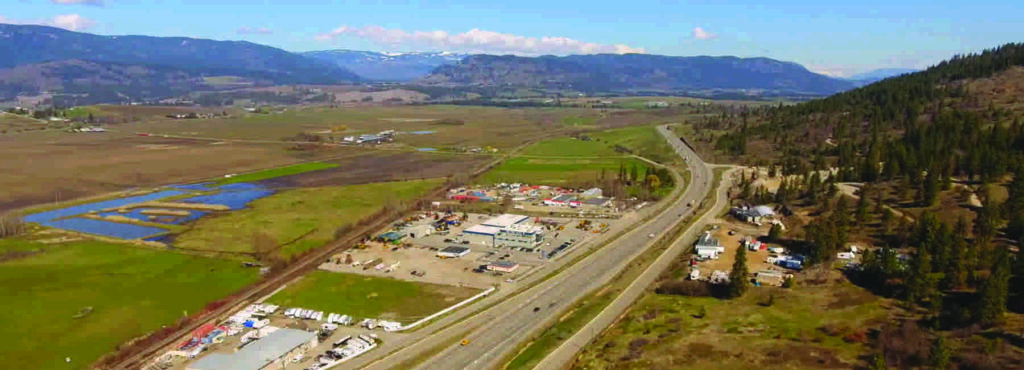The NOWRP project continues to move forward, despite the challenges presented in the last year. With the COVID-19 impacts on the supply chain, and wildfires that threatened many areas around the Okanagan, crews are still working hard behind the scenes. Over the last few months, the project underwent a Value Engineering (VE) Assessment. The Value Engineering process is required by the province, working to keep the project on budget, while still delivering a valuable service to the North Okanagan. The chosen solution was to deliver the project with an Integrated Project Delivery model.

About the North Okanagan Wastewater Recovery Project
The North Okanagan Wastewater Recovery Project is the result of a unique partnership launched in 2015 by the Regional District of North Okanagan (RDNO), Township of Spallumcheen and Okanagan Indian Band (OKIB) to improve water quality in Swan Lake and local streams, and to provide economic development opportunities through the implementation of a community sewer system. The project will provide sewer service to residents and businesses in portions of RDNO Electoral Areas B and C, the Township of Spallumcheen’s southeast industrial area and have the ability to service parts of OKIB.
Progress Highlights
- Preliminary design has been completed for the total system.
- The initial Archaeological Overview Assessment is complete, and 10 additional archaeological impact studies are being held at 10 separate locations throughout the study area. Further studies such as Environmental Management Plans are underway.
- The Value Engineering Assessment was completed, with the Integrated Project Delivery (IPD) model being chosen to help improve project costs without sacrificing project components.
- Using the IPD model, a team consisting of the project owner, project contractor, and project consultant/engineer will revise the project concept, budget and scope and complete detailed design. The project contractor role has gone to Tender, with the selection to be made in September.
Integrated Project Delivery (IPD)
IPD is an approach to project delivery that integrates people, systems, business structures and practices into a process that collaboratively harnesses the talents and insights of all participants to optimize project results, increase value, reduce waste, and maximize efficiency through all phases of design, fabrication, and construction. The IPD model has been used on 50+ projects in western Canada since 2018, though it has been popular in the USA for almost a decade.
VE verses IPD
When a project comes in over budget, Value Engineering (VE) looks to cut costs by reducing project scope—cutting out the ‘extras’. IPD works to get the same project scope—leaving in the ‘extras’—but at a reduced cost. While both options save money, VE reduces project
scope and IPD solely reduces cost.
How does IPD work?
IPD is conducted though a 4-6 month process that aligns the interests of all project parties by tying their individual success to the overall success of the project. This promotes work efficiency, open communication, sharing of information and joint problem solving. IPD optimizes the project’s cost, time, quality and other risks thanks to the collaborative effort and shared investment of all team members. This allows for fast-tracking the project schedule while also minimizing the possibility of project re-design.
North Okanagan Wastewater Recovery Project delivery process
The City of Kamloops used the Integrated Project Delivery model to complete it’s recently renovated Canada Games Aquatic
Matt Kachel, City of Kamloops
Centre. The City, designers and builders worked together under a shared and transparent risk model, with the entire team
involved from the planning phase to completion of the project. This system created and fostered the environment for innovative
design as well as highly accurate budget and schedule planning. The result was the project being completed 2 weeks ahead of
schedule and under budget with its full planned scope delivered.
This measurable success has prompted two more IPD projects and will be a consideration for similar future projects moving
forward.
IPD Pros
- Increased transparency
- Time and cost savings
- Shared accountability across all IPD team members, everyone is equally as invested in project success
- The project design stays largely the same from start to finish as all parties contribute equally to the design process
- Greater innovation and collaboration as all parties are involved in all project stages
IPD Cons
- New(er) Concept, not everyone is familiar
- Works best on projects costing over $5 million
- Trust isn’t automatic, it can take a while to build strong, collaborative teams
- Higher personal time investment; as all parties are involved in all project stages their time commitment increases
- Needs high flexibility from team members as more people have input on each of the project stage
What’s Next?
The project is underway, and we are currently in PHASE 2: DESIGN, which should be complete at the end of 2021.

Here’s what’s next:
- Select a qualified IPD General Contractor
- IPD team will revise the project concept, budget and scope and complete detailed design
- Submission of the MWR registration application
Still have questions? Read the FAQs for more information.






